Last Thursday I had the opportunity to see Joel Salatin speak about sustainable farming. Mr. Salatin is the owner of Polyface Farms, “a family owned, multi-generational, pasture-based, beyond organic, local-market farm.” If you saw the film Food, Inc, you would also remember Joel as the fast-talking farmer with suspenders and straw hat. Essentially, Joel Salatin is one of the leaders in the movement to return our food system to one that is healthier for both humans and the environment. His new book, Everything I Want To Do Is Illegal: War Stories From the Local Food Front, gives readers a behind-the-scenes look at the battles with the “food police” that Polyface Farms has gone through in an effort to bring fresh, wholesome food to their customers.
Salatin’s lecture carried some of the same themes as what you’ll hear him talk about in Food, Inc., but he went into much more detail about our country’s food regulation systems. I was really shocked to learn about what is considered to be illegal by the “food police”, as Salatin calls them (AKA the USDA). A sampling of what you can’t do as a commercial food producer:
- You cannot sell Raw Milk. Raw Milk is unprocessed milk. It is taken directly from the cow, cooled, and bottled. Read: You have to process milk before you sell it, and processing costs LOTS of $$.
- You cannot sell meat that has not passed through a processing plant (again, LOTS of $$). Processing plants cannot be located in an agricultural district. Meaning, raw meat must be taken from the farm, driven many miles to a huge processing plant, processed, and then driven back to said farm. So, we’re wasting fossil fuels via transport, not to mention the contamination issues that come from processing plants.
- Open air processing is illegal for chicken. However, the chicken processed in open air at Polyface farms tests out to having 25 times less bacterial contamination that the chicken you find in the grocery store.
- You can’t have a sawmill on a farm (you know, close to where the trees are). Polyface, and other farms like it, use sawdust as a natural bedding for animals and mulch for plants, but it has to be trucked in. In addition, having a sawmill would give the farm another sustainable source of income via wood products.
- Insurance guidelines also make it illegal for Salatin and Polyface farms to sell another farm’s produce in their farm store, allow their high-school aged employees to use a cordless drill, use the farm office to write books, charge a fee for giving a farm tour, or allow anyone to camp on the farm’s property. (Some volunteers had proposed this so that they could be on the farm to learn about sustainable farming practices).
Salatin had lots of stories to tell about all of his illegal activity which really brought to light one simple fact: the “food police” has no concern for quality of food. It’s about “controlling the market access to food,” or in other words, making sure the industrial food companies don’t lose any of their business to the small, locally based farmer. Salatin made an interesting point: 90% of the work that Heifer International does in other countries is illegal here in the United States (Heifer is a Little Rock based non-profit that works in poverty-stricken/rural countries to create locally based food-production systems).
Salatin also talked about the chemical-based foods that our country has become addicted to, and how it affects our health. He pointed out that our culture thinks it is normal to eat things that you can’t make or grow, things that contain ingredients you can’t pronounce, ingredients that were created in a test tube in a lab. “Normal,” he says, “Is the fact that we each have over 3 million bacteria living inside of us. That bacteria doesn’t think that these engineered foods are normal. If we want to be healthy, we need to feed our bacteria what they’re used to eating – REAL FOOD!” In the time of H1N1, it’s interesting to consider this: would it cost our country more to create vaccinations to protect us all from the germs, or to create a food system that provides everyone with nutritious food that builds our immune systems up so that our bodies are better equipped to fight germs on their own?
The thing that strikes me the most about Joel Salatin is his ability to completely overturn the farmer stereotype. He describes himself as a “Christian, Libertarian, Environmental, Capitalist, Lunatic, Farmer” Salatin is incredibly well spoken, using words like “pathogenicity”, and you have to really have your listening ears on to soak it all in. He has written and published six books. I wasn’t surprised when I found that he has a bachelors degree in English. He’s setting the example for a new generation of farmer, turning us all back on to the “old” way of thinking about our food, so that we can know what we are eating is made of and where it came from.
Salatin’s final message at the lecture was this: “Opt out and do it. We vote three times a day on the legacy that we will leave our grandchildren, one bite at a time.”
If you want to vote for local, unprocessed food and healthy farmland for our grandchildren, here’s a website to get you started:
http://www.localharvest.org/ – Enter your zip code to find local food markets, including farmers markets and farms that sell direct.
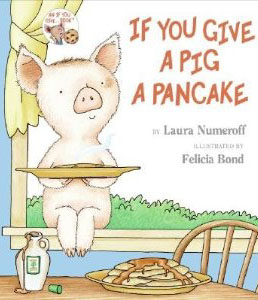 Carina has become highly interested in the Spanish language over the past month or so. I thought it would be fun for her to read some books in Spanish, so we hit the library and picked up If You Give a Pig a Pancake in both English and Spanish. The Spanish title is Si Le Das un Panqueque a una Cerdita. I thought it was funny that the Spanish word for pancake is panqueque.
Carina has become highly interested in the Spanish language over the past month or so. I thought it would be fun for her to read some books in Spanish, so we hit the library and picked up If You Give a Pig a Pancake in both English and Spanish. The Spanish title is Si Le Das un Panqueque a una Cerdita. I thought it was funny that the Spanish word for pancake is panqueque.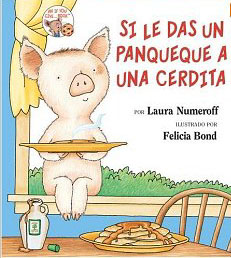 But, before I turn into an ugly American, I should probably find out where pancakes come from. A Google search for “who invented the pancake” returns various results that credit, among others, the dutch, the Romans, and Asians (using rice, of course). By the way, Aunt Jemima’s pancake flour was the first ready-mix food to be sold commercially. It was invented in St. Joseph, MO, according to foodreference.com. Holla to my home state.
But, before I turn into an ugly American, I should probably find out where pancakes come from. A Google search for “who invented the pancake” returns various results that credit, among others, the dutch, the Romans, and Asians (using rice, of course). By the way, Aunt Jemima’s pancake flour was the first ready-mix food to be sold commercially. It was invented in St. Joseph, MO, according to foodreference.com. Holla to my home state.

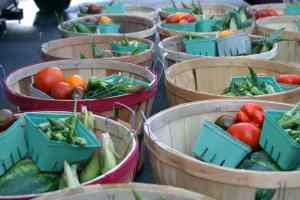

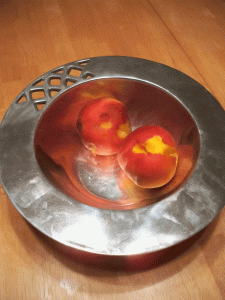

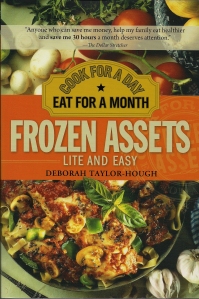 So, I after I dropped the kids at parents day out this morning, I made a trip to the book store to actually PURCHASE a book I’ve been hoarding. I know that I cannot be without this cookbook I’ve been using for the past several months. Frozen Assets, Lite and Easy: Cook for a Day, Eat for a Month by Deborah Taylor-Hough has been of huge assistance in helping me get supper on the table on a regular basis.
So, I after I dropped the kids at parents day out this morning, I made a trip to the book store to actually PURCHASE a book I’ve been hoarding. I know that I cannot be without this cookbook I’ve been using for the past several months. Frozen Assets, Lite and Easy: Cook for a Day, Eat for a Month by Deborah Taylor-Hough has been of huge assistance in helping me get supper on the table on a regular basis.






